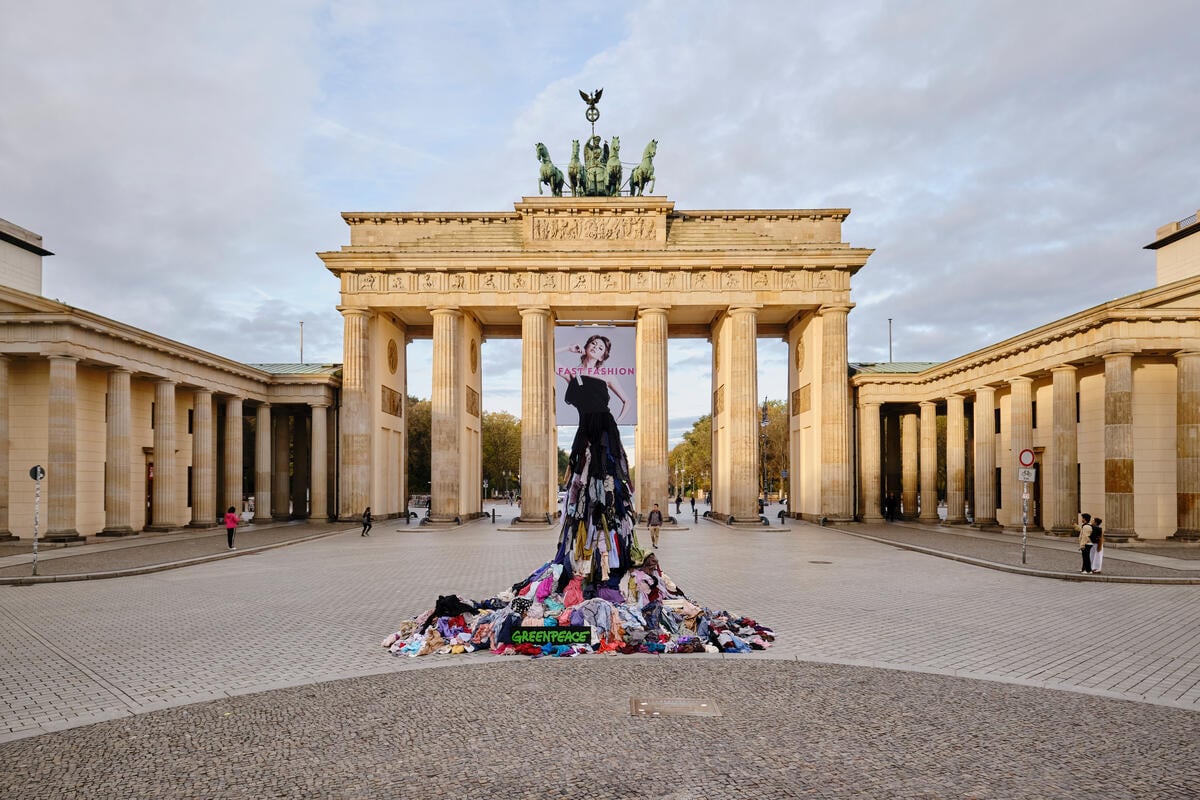Fast fashion summarizes everything wrong with fashion: from GHG emissions to slave labor, overproduction, cultural appropriation, and stealing designs from artisans and small businesses, to name a few of the issues. But fast fashion isn’t an inevitable choice: there are ways to dress well, do so sustainably, and even save money. Let me explain.
The bigger problem isn’t the consequences of fast fashion, it’s the cultural shift towards infinite shopping. The shift towards infinite choices of cheap goods at low prices means buyers are never satisfied and just keep buying more and more cheap junk to fill the void which can never be filled. It’s the illusion of low prices when in reality we’re shopping more than ever before. Patagonia’s free film The Shitthropocene further explores this issue.
So what’s the solution for all of this? An act of resistance. A cultural shift towards slowing down, buying less, investing in quality over quantity, loving our clothes, taking care of what we have, and supporting a more ethical and sustainable fashion industry.
Sounds like a lot but it’s actually quite simple. It starts with your closet and the things you already own.
Closet Cleanout: Start With The Clothing You Already Have
To build the sustainable wardrobe of your dreams, you must first consider all of the clothes that you already own. A huge part of sustainability is reusing and making use of what you have, and your closet is no exception.
To get started take all of your clothes out of the closet, the drawers, etc. Clear your closet and drawers so you’re starting with a blank canvas.
Next: organize all of your clothes into 3 piles:
- Clothes you frequently wear
- Clothes you occasionally wear
- Clothes you never wear
Clothes you frequently wear is the easiest pile to start with. If everything fits great and nothing needs to be repaired simply put all of it back in your closet. For anything that needs mending or a size adjustment, put it in a new fourth pile: clothes to be tailored.
Next: look at the clothes you never wear. Is there anything in there that you like but it just doesn’t fit you right? Put that in the fourth pile for clothes to be tailored.
Also ask yourself is there anything in this pile that you really want to wear? Move those items to the occasional wear pile.
Done with that? Everything that’s left in the never wear pile needs a new home. Remember: never put your old clothes in the trash. Instead opt for one of the many more sustainable options to dispose of old clothes or search on Earth911 for a recycling center near you.
Next, look at the clothes you wear occasionally. Take anything you’re excited to wear and put it back in your closet so you can start trying to wear it on a regular basis again.
For everything else, you can put it back in your closet but in a separate section from everything else. Over the next several weeks you’re going to try to wear these pieces. If after several weeks you don’t use them, it might be time to consider moving them to the never wear pile and finding a new home for them.
Finally, take that fourth pile you created of clothes to be tailored and take them to a local tailor. Repairing clothes and getting them tailored to fit better isn’t just cheaper than buying new clothes, it’s more sustainable too!
Do You Know Your Personal Style?
Knowing your style might at first seem self indulgent but really it’s anything but. In order to build a closet you love where everything gets used and used well, you have to first know who you are and what style you love. Once you know what you love you can build a closet of clothes that all get used until they’re no longer usable, and what’s more sustainable than that?
If you don’t know your personal style, how can you find out? While discovering your personal style can take decades, and for many of us it’s evolving, like most things we can simplify it and in doing so find more joy.
First of all, stop worrying about trends or what style influencers are doing, that’s not your personal style. Instead, use Pinterest to discover your personal style for free. Create a new board and call it something like “My Style”. Then search for style inspiration and pin everything you love to this board.

Once you have 30 or more pins it’s time to edit. Go through your board a second time and unpin anything you don’t love or wouldn’t wear. The goal with personal style is to find clothes that express your style, your creativity, who you want to be in the world, and that you will feel confident in.
Once you feel that your board is ready you’ve got your personal style. Build your wardrobe to match that.
One thing to remember: personal style changes but not every day. Build a personal style that you can keep for at least 5 years.
Make A Shopping List: What New Clothes Do You Need?
Now that you cleaned out your closet and you know your style, it’s time to make a list of what clothes you need in order to create your personal style. What’s missing in your closet that you see in the outfits you love?
Do you need a few new pieces? Do you already have everything you need? Are you starting from scratch? Figure out where you are so you can create a shopping list that’s intentional.
Now make a list of everything you need to achieve your ideal style. A list is critical to help ensure you only buy what you need, and don’t buy things on impulse.
When doing this exercise remember to be creative and flexible. For example, if there’s an outfit you love with a green over shirt but you already have a blue over shirt, maybe you can use the blue one instead and you won’t need to buy a new piece.
Have You Considered A Capsule Wardrobe?
If you are starting from scratch or going with a completely new style, a Capsule Wardrobe might be a great option for you. A Capsule Wardrobe is a limited number of pieces, such as 10, 20, or 30, where the pieces are easily interchangeable and everything gets worn. For example, in a capsule wardrobe one of the pieces might be a black skirt, and that skirt might be easy to pair with 8 of the tops you selected.
As you can imagine, this is a super sustainable option. It’s also easy to shop for because if you know you want to build a 20 piece capsule, and you already own 10 of the pieces, you know you only need to buy 10 more.
How To Shop For Sustainable Clothing
Now that you know what you need you might be wondering how you can buy it sustainably? If you enjoy thrifting or you’re shopping on a budget then it’s a great sustainable place to start. \
Take your list to your local thrift stores and see what you can find. It helps to keep clothes in use and out of the landfill.
Another great option is to shop what you need from sustainable brands. This is a great choice because sustainable brands do things like use more sustainable raw materials, save water, save energy, reduce GHG emissions, and pay clothing makers fair wages. When you shop these brands you help drive the fashion industry towards better practices.

But when shopping for sustainable brands it’s important to find a source you trust to avoid greenwashing. Eco-Stylist is one such source that thoroughly researches brands to find the most sustainable brands on the planet. You can use the brand guide to find over 100 vetted brands and filter by things that matter to you like gender, clothing type, vegan clothes, living wages, and more.
Need Help? Consider a personal stylist
If all of this seems overwhelming to you a personal stylist could be the answer. These professionals can help you clean out your closet, identify your ideal style, and even shop for clothes.
For many people building a sustainable closet is just too much work. You have to know your style, then find brands that fit your style, then figure out which brands are actually sustainable, then figure out which brands have your size, and the list goes on … You can quickly see where people get overwhelmed and throw in the towel.
I created Eco-Stylist to help people solve these exact problems. We offer an accessible personal styling subscription to help identify your style and provide hand picked shopping recommendations just for you, based on your unique style profile.
Remember, living more sustainably starts with small steps. We can all make a difference and the most important thing is to just get started!
About the Author
 Garik Himebaugh is the founder of Eco-Stylist, a trusted source to find and shop sustainable clothing. He’s been a sustainable personal stylist for six years, helping people discover their personal style with sustainable brands. Garik has an MBA from the University of Iowa.
Garik Himebaugh is the founder of Eco-Stylist, a trusted source to find and shop sustainable clothing. He’s been a sustainable personal stylist for six years, helping people discover their personal style with sustainable brands. Garik has an MBA from the University of Iowa.
Source link
Earth911 earth911.com



